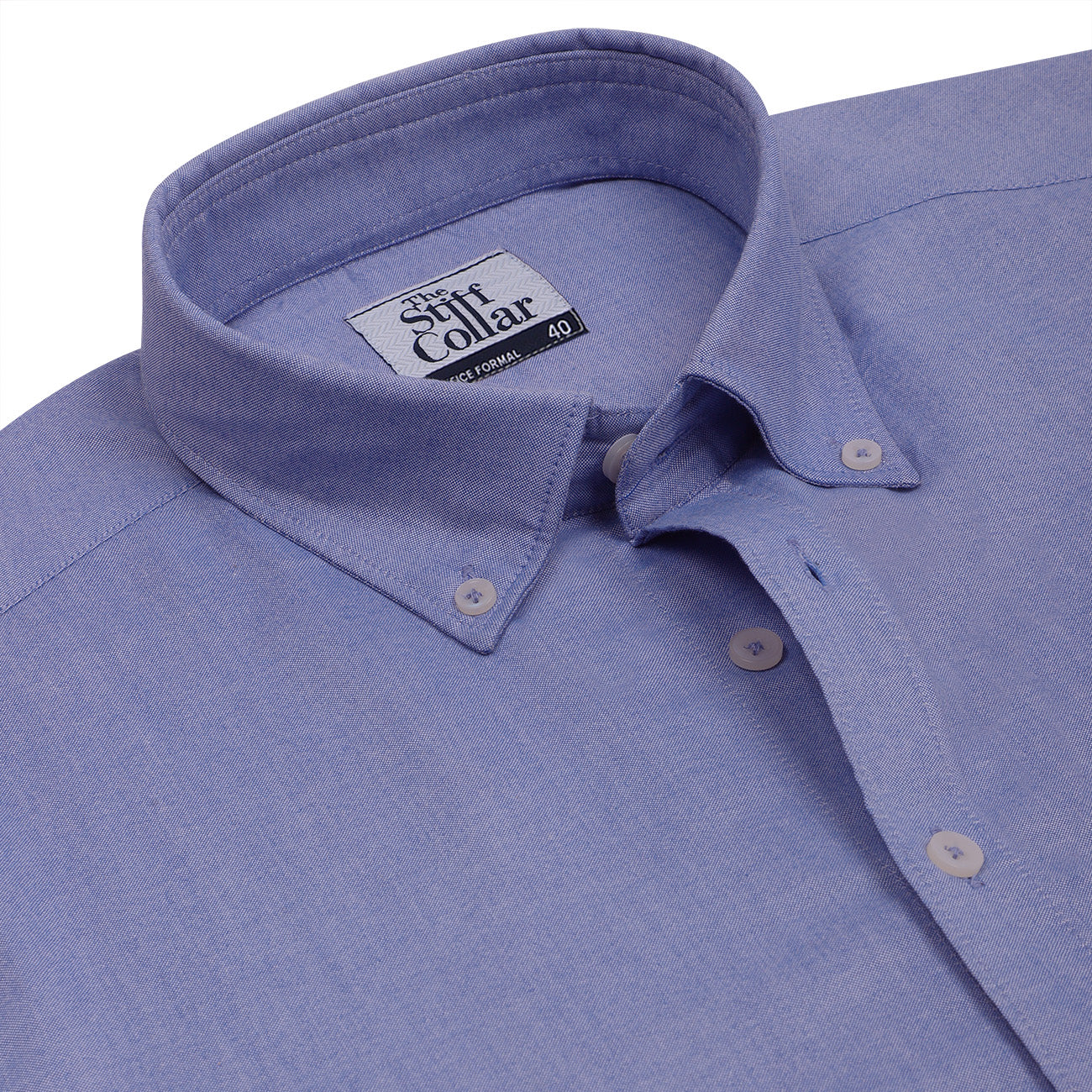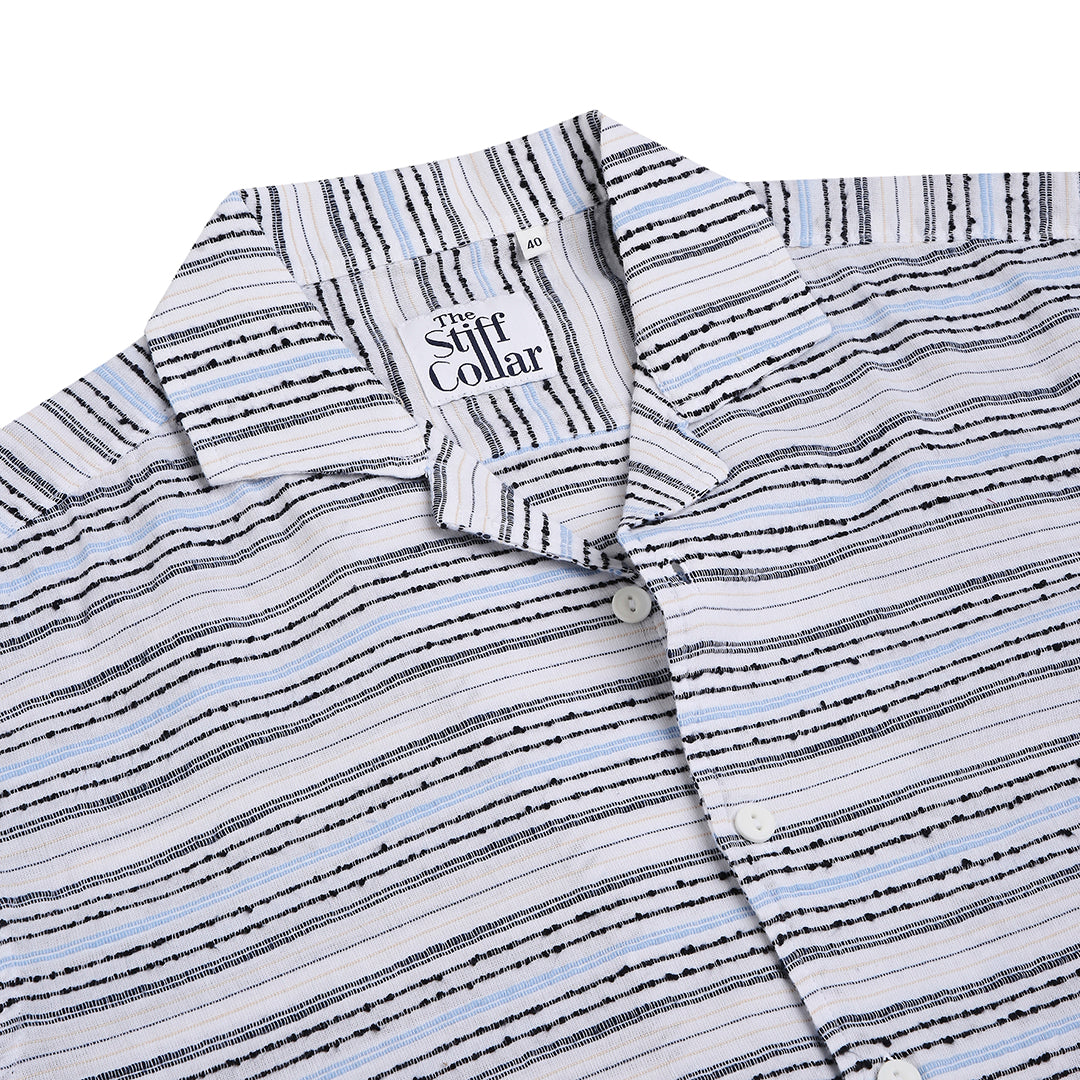Here are a few guidelines:
Shirts that are made with a flat bottom hem are meant to be worn untucked. But if the shirt has visible “tails” — that is to say, the hem varies in length, rather than being even all the way around — it should always be tucked in.
Wearing a shirt with tails untucked is not a good look. There are men who will insist on the artfully untucked shirt. More power to them. But in my opinion, tucking in a shirt with tails will always give you a sharper and more mature look.

If your shirt doesn’t have visible tails, there’s more leeway on whether you should leave it tucked or untucked:
- Undershirts — These can always be tucked, and absolutely should be if there’s any chance of them poking out from beneath your other layers. For best results, tuck undershirts into underwear (more on this below).
- Polo shirts — They have an even hem and can be worn untucked, but are often tucked in for a little dressier look, especially by golfers. Rugby shirts, their long-sleeved cousins, are almost never tucked in, however.
- Turtleneck/roll collars — When worn under a sports jacket or blazer, these are often tucked so that the belt buckle is visible. On their own, it’s better to leave them untucked.
- Hawaiian shirts — These and any other loud-print shirts don’t get tucked no matter what their hem looks like. Seriously, just don’t. Nothing looks dorkier than a tucked-in vacation shirt. This goes for Guayaberas as well.
- T-shirts — Opinions are going to vary widely here. Some subcultures love the tucked T-shirt with the visible belt buckle; others will think you look like a total nerd. It depends a lot on the shirt, the belt, and the trousers, as well as your overall style. In general, don’t tuck the T-shirt unless it’s a deliberate style statement.
What Is the Proper Way to Tuck in a Shirt?
When it’s time to tuck in your shirt, do it the right way.
A good tuck should make the front of your body smooth and flat. There should be no wrinkling and no “muffin-topping” — where the shirt blouses out over the trouser waist and makes a ring around your midsection. You should also have a clean “gig line” — a military term for the imaginary line straight down the front of your body, from the point of your chin to your crotch. A well-tucked shirt should sit so that the shirt placket (the rectangle of fabric where the front buttons are located) lines up precisely with the fly of your trousers.

Finally, keep in mind that a well-fitted shirt will always make tucking the shirt in easier in general. The less excess fabric you’re dealing with around the waist, the less your tuck has to secure. A well-fitted shirt is also sure to be long enough for an effective tuck, while a short shirt will always be in danger of escaping no matter how well you tuck it.
1) The Basic Trouser Tuck
Here’s the easiest way to do this one: put your underwear on, then put your shirt on and button it up, and then finally pull your pants on, buttoning them closed over the shirttails. Your shirt ends up pinned beneath your trousers with no effort on your part. It just got there by virtue of the order you did things. And as long as your trousers aren’t too loose, the shirt will probably stay there. Just because it’s easy doesn’t mean this is a bad tuck. This method works well with a fitted shirt, and terribly with anything else. If your shirt doesn’t have a close, well-tailored fit, you need a little more technique to deal with the excess fabric.
2) The Military Tuck
This is how the armed forces are taught to tuck in their uniform shirts. It creates a pair of folded pleats, which are then pinned flat by the trouser waist for a crisp, stiff tuck. Below are the step-by-step instructions. Don’t be discouraged if this one takes you a few tries to get right! It really starts to shine once you’ve practiced it enough for the movements to become routine.
- Have your pants on, but unbuttoned. You’ll need to close them up quickly over the shirt once you’re done with your folding.
- Pinch each of the shirt’s side seams between a thumb and forefinger. Pull down to tug all the fabric taut.
- Fold the seams backward toward your rear end, creating a pleat that folds over any loose fabric in the sides. Use enough pressure to pull the shirtfront smooth and taut across the front of your chest.
- Button your pants up and belt them to hold the pleats flat against your body. Depending on how much excess fabric the shirt had, the folds should sit somewhere behind your hips, underneath the back of your armpits.
- The military tuck can take practice getting the folds straight and flat, and it works best in stiff, smooth fabrics that can hold the crease well. Use it any time you’ve got excess fabric around the waist and sides of the shirt.
3) The Underwear Tuck
Refers to the need to properly tuck your undershirt into your underwear in order to ensure the dress shirt is between your underwear and trousers (vs. your undershirt and dress shirt sitting between your underwear and trousers). Believe it or not this small difference has a large impact on how your shirt stays tucked in throughout the day. Your ideal tuck, if you’re an undershirt wearer, should go in this order, from the body outward: undershirt, waistband of your underwear, regular shirt, waistband of the trousers, and finally your belt.
Bad Tucks
In addition to simply not tucking in a shirt that is made to be tucked in, there are a couple of bad ways to tuck:

The Half-Tuck
Tucked in at the back, but with one of the two shirttails in front popped out and waving in front of the trousers. It’s supposed to be a sexy, just-rolled-out-of-bed look, or something. Unless you’re Brad Pitt, you just look like you did a bad job tucking back in after going to the bathroom.
The Once-Tucked
Once you’ve made the decision to tuck in your shirt, commit to it. Untucking a shirt that you’ve been wearing half the day in your pants results in the bottom section being wrinkled and rumpled — giving you a disheveled look.
The Tuck With No Belt
Obviously, when you tuck in your shirt, the top of your pants (and therefore any belt loops and buttons) will show. If your pants have belt loops, wear a belt. If you don’t like wearing a belt, consider removing the loops.











